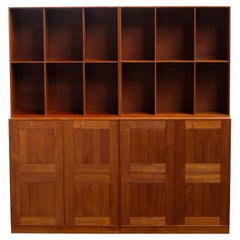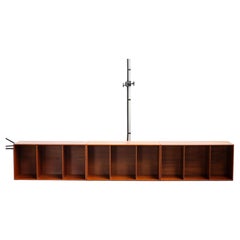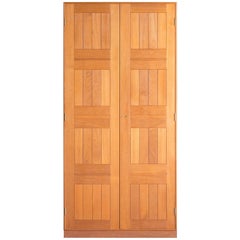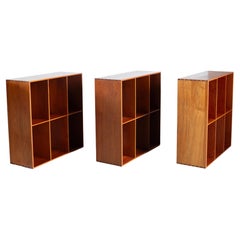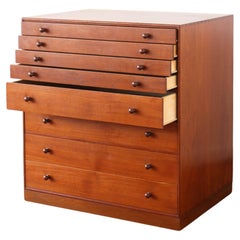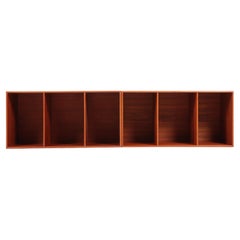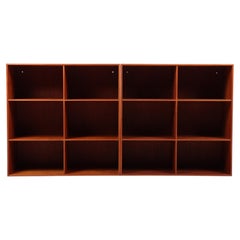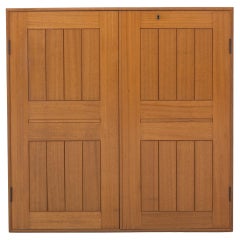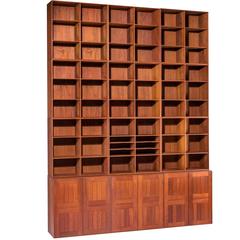Mogens Koch Cabinet Teak
Mid-20th Century Danish Scandinavian Modern Commodes and Chests of Drawers
Teak
Mid-20th Century Danish Scandinavian Modern Bookcases
Teak
Mid-20th Century Danish Scandinavian Modern Bookcases
Teak
Mid-20th Century Danish Scandinavian Modern Wardrobes and Armoires
Teak
Mid-20th Century Danish Scandinavian Modern Bookcases
Teak
Vintage 1920s Danish Scandinavian Modern Commodes and Chests of Drawers
Mahogany
Vintage 1950s Scandinavian Scandinavian Modern Bookcases
Teak
Vintage 1950s Scandinavian Scandinavian Modern Bookcases
Teak
Mid-20th Century Danish Mid-Century Modern Bookcases
Teak
Recent Sales
Mid-20th Century Danish Scandinavian Modern Cabinets
Elm, Mahogany, Oak, Teak, Pine
Vintage 1950s Danish Scandinavian Modern Bookcases
Vintage 1960s Danish Scandinavian Modern Bookcases
Teak
Vintage 1960s Danish Scandinavian Modern Bookcases
Teak
Mid-20th Century Danish Scandinavian Modern Cabinets
Maple, Teak
Vintage 1960s Danish Scandinavian Modern Bookcases
Teak
Vintage 1960s Danish Mid-Century Modern Cabinets
Teak
Vintage 1930s Danish Scandinavian Modern Bookcases
Teak
Vintage 1930s Danish Scandinavian Modern Cabinets
Teak
Vintage 1950s Danish Scandinavian Modern Sideboards
Teak
Vintage 1930s Danish Scandinavian Modern Bookcases
Teak
Vintage 1960s Danish Scandinavian Modern Cabinets
Brass
Mid-20th Century European Mid-Century Modern Cabinets
Teak
Mid-20th Century Danish Scandinavian Modern Bookcases
Teak
Mid-20th Century Danish Scandinavian Modern Bookcases
Teak
Mid-20th Century Danish Scandinavian Modern Bookcases
Teak
Mid-20th Century Danish Scandinavian Modern Bookcases
Teak
Mid-20th Century Danish Scandinavian Modern Bookcases
Oak, Teak
People Also Browsed
Mid-20th Century French Mid-Century Modern Dressers
Ash
21st Century and Contemporary Italian Modern Sofas
Wool, Cotton
21st Century and Contemporary Swedish Mid-Century Modern Table Lamps
Textile
2010s Mexican Brutalist Contemporary Art
Wood
Vintage 1970s Scandinavian Scandinavian Modern Bookcases
Pine
Vintage 1960s Italian Mid-Century Modern Lounge Chairs
Metal, Chrome
Mid-20th Century Italian Mid-Century Modern Bookcases
Stained Glass, Wood
Vintage 1960s French Mid-Century Modern Wardrobes and Armoires
Brass
2010s American Modern Stools
Wood, Oak
Mid-20th Century Danish Scandinavian Modern Bookcases
Mahogany
Vintage 1970s French Mid-Century Modern Commodes and Chests of Drawers
Wood
Mid-20th Century Danish Scandinavian Modern Bookcases
Oak
21st Century and Contemporary Portuguese Art Deco Chandeliers and Pendants
Metal
Mid-20th Century Danish Scandinavian Modern Bookcases
Pine
Vintage 1960s French Mid-Century Modern Wardrobes and Armoires
Oak
2010s Beds and Bed Frames
Iron
Mogens Koch Cabinet Teak For Sale on 1stDibs
How Much is a Mogens Koch Cabinet Teak?
Mogens Koch for sale on 1stDibs
Vintage Mogens Koch furniture endures as a sophisticated example of Scandinavian modernism in today’s homes. The award-winning mid-century Danish architect was known for his functional approach to furniture design and for prioritizing comfort and accessibility. While these are traits that we typically attribute to American mid-century modern design — as well as the coveted furnishings that originated in Scandinavian workshops — Koch also drew on older traditions and techniques. His chairs, tables and other items show the influence of the Shaker style and English pieces of the 18th century.
Koch was born in Copenhagen and attended the Royal Danish Academy of Fine Arts. After graduating, he worked as an assistant to Kaare Klint, an important figure in Danish modernism who was responsible for establishing the furniture design program at Koch’s alma mater. Klint favored historical styles and inspired Koch to view furniture design as an evolutionary process built on the traditions of the past. Over the course of their partnership, in the late 1920s, Koch began creating modular bookcases. Simple yet elegant, vintage Mogens Koch bookcase systems — which were over the years crafted in comely woods such as mahogany, oak and cherrywood — are all about versatility and flexibility, intended to be configured to fit rooms of all shapes and sizes.
In 1932, Rud Rasmussen began to produce Koch bookcase designs. An early Koch seating design that the Danish manufacturer made was the MK Safari chair, an unassuming folding chair based on traditional British campaign furniture. It greatly resembles Klint’s own Safari chair, which was designed in 1933 and was also inspired by military furniture. It became one of Koch’s signature armchairs. The seat inspired a series of folding furniture pieces, including tables that could collapse for storage.
In 1938, Koch was awarded the Eckersberg Medal from the Royal Danish Academy of Fine Arts. He took an associate professor role at the school in 1940. In 1950, he became a full professor of architecture and continued teaching until 1968. The academy also awarded him their highest honor — the C.F. Hansen Medal — in 1963. Later in life, Koch won the 1990 Danish Design Center's Classic Award and the 1992 Industrial Design Prize.
On 1stDibs, you can find vintage Mogens Koch storage pieces, coffee tables and more.
A Close Look at Scandinavian Modern Furniture
Scandinavian modernism is perhaps the warmest and most organic iteration of modernist design. The work of the designers associated with vintage Scandinavian modern furniture was founded on centuries-old beliefs in both quality craftsmanship and the ideal that beauty should enhance even the humblest accessories of daily life.
ORIGINS OF SCANDINAVIAN MODERN FURNITURE DESIGN
- Emerged in the 1930s
- Scandinavian design and Nordic design originated primarily in Denmark, Sweden, Finland, Iceland and Norway
- Introduced in the United States in mid-20th century
- Informed by the Bauhaus; influenced American mid-century modernism
CHARACTERISTICS OF SCANDINAVIAN MODERN FURNITURE DESIGN
- Bold, clean lines and simple, sturdy symmetries
- Use of natural materials — native woods such as pine, ash and beech
- Open, airy spaces
- Promotion of functionality
- Emphasis on craftsmanship; rooted in cabinetry profession and traditional construction techniques
- Minimal ornamentation (little to no embellishment)
- A neutral or light color palette owing to prominence of light woods
SCANDINAVIAN MODERN FURNITURE DESIGNERS TO KNOW
- Alvar Aalto
- Hans Wegner
- Kaare Klint
- Arne Jacobsen
- Greta Magnusson Grossman
- Finn Juhl
- Arne Vodder
- Verner Panton
ICONIC SCANDINAVIAN MODERN FURNITURE DESIGNS
VINTAGE SCANDINAVIAN MODERN FURNITURE ON 1STDIBS
The gentle, organic contours that are typical of Scandinavian design appear in the furnishings and decor created by Danish, Finnish and Swedish designers not as a stylistic gesture, but rather as a practical, ergonomic — and, as importantly, elegant — response to the human form.
Each nation produced exceptional talents in all areas of the applied arts, yet each had its forté. Sweden was home to Greta Magnusson Grossman and Bruno Mathsson — creators of the classic Grasshopper lighting series and Berlin daybed, respectively — but the country excelled most notably at ceramics. In the 1920s at the great Gustavsberg porcelain manufactory, Wilhelm Kåge introduced pieces in the Scandinavian style based on influences from folklore to Cubism; his skills were passed on to his versatile and inspired pupils Berndt Friberg and Stig Lindberg.
Likewise, Finland produced a truly ingenious Scandinavian modern furniture designer in the architect Alvar Aalto, a master at melding function and artistic form in works like the Paimio chair, created in collaboration with his first wife, Aino. Yet Finnish glassware was pre-eminent, crafted in expressive, sculptural designs by Tapio Wirkkala and Timo Sarpaneva.
The Danes excelled at chairs. Hans Wegner and Arne Jacobsen were exemplars of the country’s facility with wood, particularly teak.
Wegner created such iconic pieces as the Round chair and the Wishbone chair; Jacobsen — while the revolutionary architect and furniture innovator produced the best-selling plywood Ant chair — designed two classic upholstered pieces of the 1950s: the Swan chair and Egg chair. The list of great Danes could go on and on, including Finn Juhl, a stylistic maverick and maker of the bold Chieftain chair; Poul Kjaerholm, with his lean metal-and-rattan aesthetic; and Verner Panton, who introduced a vibrant Pop note into international design.
Today, decades after their heyday, the prolific, ever-evolving Scandinavian modernists continue to amaze and delight, and interior designers all over the world use their pieces to bring warmth to any given space.
On 1stDibs, you will note both instantly recognizable vintage Scandinavian modern chairs, sofas, rugs and tables — those that have earned iconic status over time — and many new discoveries.
Finding the Right Case Pieces And Storage Cabinets for You
Of all the vintage storage cabinets and antique case pieces that have become popular in modern interiors over the years, dressers, credenzas and cabinets have long been home staples, perfect for routine storage or protection of personal items.
In the mid-19th century, cabinetmakers would mimic styles originating in the Louis XIV, Louis XV and Louis XVI eras for their dressers, bookshelves and other structures, and, later, simpler, streamlined wood designs allowed these “case pieces” or “case goods” — any furnishing that is unupholstered and has some semblance of a storage component — to blend into the background of any interior.
Mid-century modern furniture enthusiasts will cite the tall modular wall units crafted in teak and other sought-after woods of the era by the likes of George Nelson, Poul Cadovius and Finn Juhl. For these highly customizable furnishings, designers of the day delivered an alternative to big, heavy bookcases by considering the use of space — and, in particular, walls — in new and innovative ways. Mid-century modern credenzas, which, long and low, evolved from tables that were built as early as the 14th century in Italy, typically have no legs or very short legs and have grown in popularity as an alluring storage option over time.
Although the name immediately invokes images of clothing, dressers were initially created in Europe for a much different purpose. This furnishing was initially a flat-surfaced, low-profile side table equipped with a few drawers — a common fixture used to dress and prepare meats in English kitchens throughout the Tudor period. The drawers served as perfect utensil storage. It wasn’t until the design made its way to North America that it became enlarged and equipped with enough space to hold clothing and cosmetics. The very history of case pieces is a testament to their versatility and well-earned place in any room.
In the spirit of positioning your case goods center stage, decluttering can now be design-minded.
A contemporary case piece with open shelving and painted wood details can prove functional as a storage unit as easily as it can a room divider. Alternatively, apothecary cabinets are charming case goods similar in size to early dressers or commodes but with uniquely sized shelving and (often numerous) drawers.
Whether you’re seeking a playful sideboard that features colored glass and metal details, an antique Italian hand-carved storage cabinet or a glass-door vitrine to store and show off your collectibles, there are options for you on 1stDibs.

